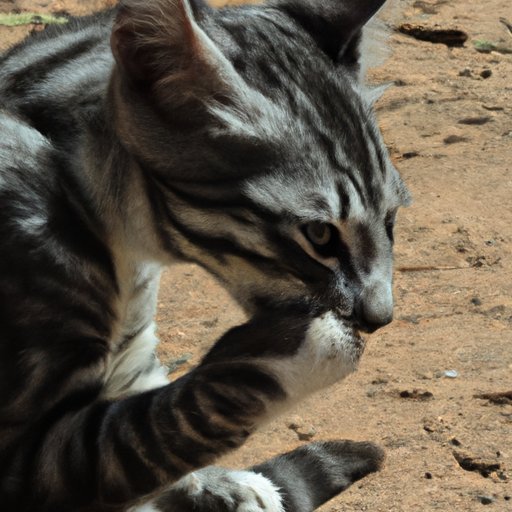Why Do Cats Knead?
If you’re a cat owner, you may have noticed that your furry friend has a peculiar habit of kneading. This behavior consists of a cat rhythmically pushing its paws in and out against a soft surface, like a lap, a blanket, or even you. While this behavior may seem cute and harmless, some cat owners find it uncomfortable, and others may wonder why their feline companion does it in the first place. In this article, we will explore the fascinating world of cats kneading to uncover the science, history, and culture behind this unique feline behavior.
The Origins of Feline Kneading
One of the most intriguing aspects of cats kneading is its origin. The truth is that there is no single answer to this question, as different theories and beliefs exist. Some people believe that kneading is a vestigial behavior, inherited from wild ancestors that needed to knead to create a comfortable and safe sleeping spot. Others believe that kneading has to do with imprinting, a behavior that kittens display when nursing on their mother’s belly. Kneading could also be interpreted as a sign of affection or marking territory. Despite the differing opinions, one thing is for sure, almost all cats knead in some form or another, suggesting that it is a hard-wired behavior.
The Science Behind Cats Kneading
Cats’ paws are unique appendages that are designed for hunting, climbing, and digging. They have thick, flexible pads that help them move silently, catch prey, and climb trees. What’s more, their paws are full of nerve endings, making them very sensitive. When a cat kneads, they are skillfully manipulating their paws to stimulate blood flow, stretch their muscles, and maintain their claws. Additionally, kneading has been shown to trigger a cat’s glands, which can release pheromones and help them mark their territory.
A Guide to Decoding Your Cat’s Body Language
For cats, kneading is not merely a physical activity but also a form of communication. Depending on the context and the cat’s mood, kneading can signal different things. When cats are happy, contented, and relaxed, they may knead your lap or sofa to show affection and trust. When they are anxious, stressed, or upset, kneading can be a self-soothing mechanism to calm them down. Interestingly, some cats might knead while also purring or drooling, which indicates a high level of contentment and happiness.
The Psychological Reasons Behind Cats Kneading
Given the multifaceted nature of kneading, it is not surprising that it has several psychological benefits for cats. One of the primary reasons cats knead is to create a sense of comfort and security. In the wild, cats have to make their own soft bedding by kneading and padding. The same behavior continues into domestic cats as they knead their sleeping spots to make them more comfortable. Additionally, kneading can help cats relax and release stress. It is believed that the repetitive, soothing motion of kneading can trigger the release of endorphins, the feel-good hormones that promote relaxation and calmness.
The History of Feline Kneading
The origin of kneading behaviors in cats can also be traced back to their evolution. Wild cats, like their domestic counterparts, had to be agile, stealthy, and efficient hunters. They needed to create their own comfortable spots in the wild while also protecting themselves from predators. Over time, the behavior of kneading evolved to develop the softest spots in the ground, thus creating safe and comfortable bedding. Fast forward to modern times, where domestic cats knead soft surfaces in their homes for the same reasons, showing that their ancestry has influenced the behavior we see today.
The Cultural Significance of Cats Kneading
Many cultures worldwide have long-lived with cats, which have been celebrated as spiritual, mystical, and even divine creatures. Because of this, many cultures around the world have developed various legends and superstitions surrounding cats. Some cultures, like the Ancient Egyptians, have seen kneading behaviors as a symbol of fertility and motherhood. Others have regarded cats’ kneading as a sign of good fortune or impending change. In modern times, cats have become a popular pet globally, and their kneading behavior is still adored by cat lovers worldwide.
Conclusion
As we have seen, cats kneading is a unique and fascinating behavior that has many different scientific, historical, psychological, and cultural perspectives. Understanding this behavior and decoding your cat’s body language can significantly improve your relationship with your feline friend. Knowing why your cat kneads and what it’s trying to communicate can help you better understand your cat’s needs and preferences. Remember, when your cat kneads you, consider it a privilege and a sign of trust and affection from your furry companion.
